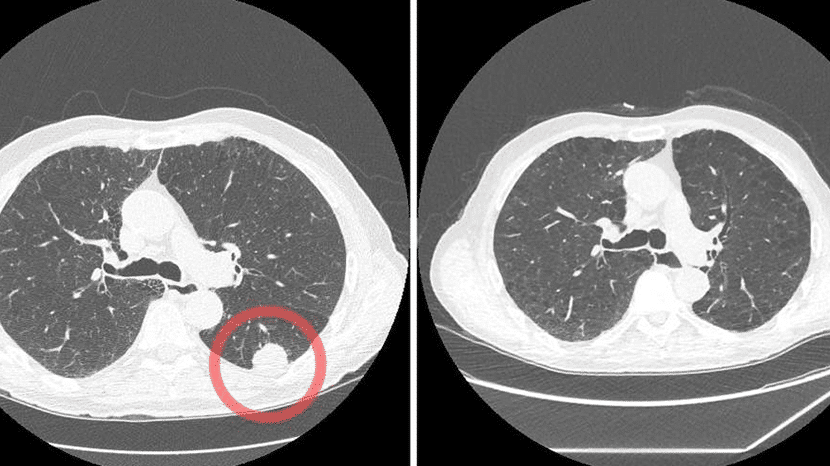
Current or Former Heavy Smoker? CT Lung Screening Saves Lives.
It’s commonly known that you are at a higher risk for lung cancer if you have smoked heavily during any time in your life. In fact, smoking is believed to cause up to 90% of lung cancer cases – and lung cancer is the leading cause of cancer death in both men and women in the United States. The good news is that CT lung screening for high-risk people can reduce deaths from lung cancer by 20% compared to chest x-ray.
What is CT lung screening?
Computed tomography (CT) lung screening is a simple radiological test done on people that are completely symptom free as a way of finding cancer before there are any indications. CT uses special x-ray equipment and computer software to obtain multiple cross-sectional images of the soft tissues, blood vessels and bones. It can distinguish between normal and diseased tissue based on changes in size, shape and appearance of the tissue. A CT lung screening can detect cancerous lung nodules at an early stage when they are more treatable, increasing survival chances.
The best way to prevent lung cancer is to never smoke or stop smoking now. If you are still smoking, talk to your doctor about ways to help you quit.
Am I a candidate for CT lung screening?
Austin Radiological Association and the American Lung Association recommend CT lung screening if you are:
- a current or former smoker
- and from 55 to 75 years old
- and with a smoking history of at least 30 pack years (this means one pack a day for 30 years, two packs a day for 15 years, etc.)
Together, these factors put you in the highest risk group for lung cancer and screening is recommended for you. However, the risk for lung cancer is different for everyone. If you do not fall into this group, consult with your doctor to see if you might benefit from CT lung screening.
The research behind the recommendation
Results from the National Lung Screening Trial published in 2010 showed a 20% reduction in mortality from lung cancer among participants screened using CT lung screening as compared to those screened with chest x-ray. The NSLT was a randomized national trial of 53,454 current or former heavy smokers who fell into the risk group mentioned above. The group was ethnically representative of the U.S. population.
What is it like getting a CT lung screening?
The CT scanner features a large ring that your body slowly passes through on a movable table. You may hear a series of whirring or spinning sounds as the x-ray tubes and other components move inside the scanner housing. CT lung screening is completely pain free and noninvasive and does not require the use of injectable contrast solution. It takes between 5 and 15 minutes to complete. After the exam is completed you will be able to resume your normal activities.
What do the results mean?
A “suspicious” result means that the CT scan detected something abnormal. Abnormal findings include lung cancer or other serious conditions and also the possibility of a “false positive,” meaning no serious condition is present. You many need to have further diagnostic exams to find out more about the abnormal results. If you do have lung cancer, your doctor and other experts will discuss plans for treatment with you.
A “negative” result means that the scan revealed no abnormalities. This does not guarantee that you do not have lung cancer or that you will not get it. Your doctor will help you determine if and when you should be tested again.
What are the risks?
CT scans do involve exposure to radiation (x-rays). But radiology is advancing rapidly and ARA’s new low-dose CT scanners allow for an up to 60% reduction in radiation dose with improved image quality. Research has consistently shown that potential detrimental outcomes from CT are related to the undiagnosed or underlying medical condition that CT will detect rather than from the minimal radiation exposure of CT. Plus, ARA uses “best practices” for lung cancer screening – your safety is paramount.
Now more than ever, CT lung screening for high-risk people is very much worth it.
 Back to Top
Back to Top